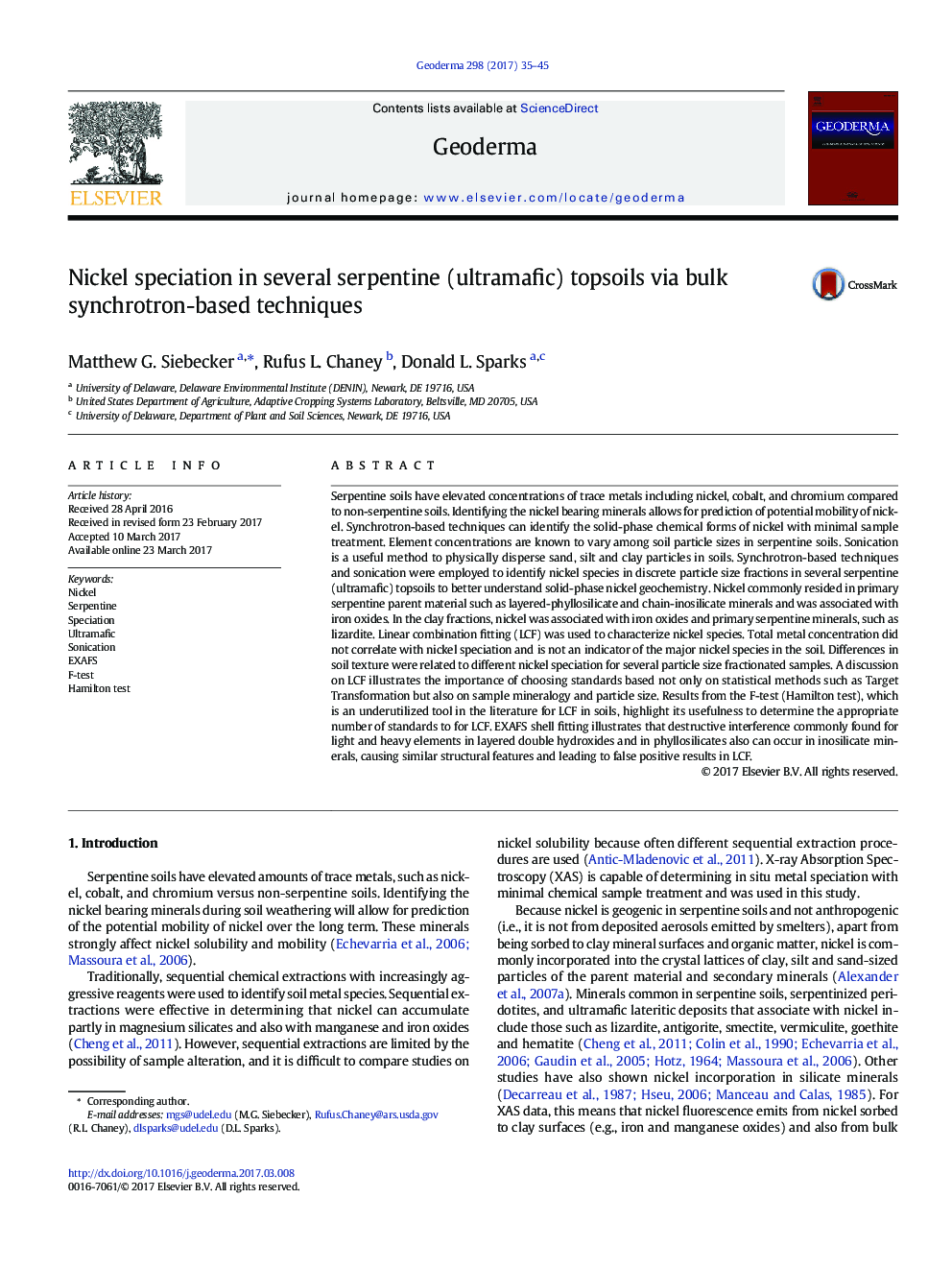| کد مقاله | کد نشریه | سال انتشار | مقاله انگلیسی | نسخه تمام متن |
|---|---|---|---|---|
| 5770586 | 1629419 | 2017 | 11 صفحه PDF | دانلود رایگان |

- Solid-phase chemical species of nickel in serpentine soils are characterized using nickel K-edge EXAFS spectroscopy.
- Serpentine minerals and iron oxides are the dominant phases for nickel.
- The F-test for linear combination fitting (LCF) of EXAFS data is discussed.
- False-positive results for LCF of EXAFS data are highlighted.
- A sonication protocol for particle size separation is described.
Serpentine soils have elevated concentrations of trace metals including nickel, cobalt, and chromium compared to non-serpentine soils. Identifying the nickel bearing minerals allows for prediction of potential mobility of nickel. Synchrotron-based techniques can identify the solid-phase chemical forms of nickel with minimal sample treatment. Element concentrations are known to vary among soil particle sizes in serpentine soils. Sonication is a useful method to physically disperse sand, silt and clay particles in soils. Synchrotron-based techniques and sonication were employed to identify nickel species in discrete particle size fractions in several serpentine (ultramafic) topsoils to better understand solid-phase nickel geochemistry. Nickel commonly resided in primary serpentine parent material such as layered-phyllosilicate and chain-inosilicate minerals and was associated with iron oxides. In the clay fractions, nickel was associated with iron oxides and primary serpentine minerals, such as lizardite. Linear combination fitting (LCF) was used to characterize nickel species. Total metal concentration did not correlate with nickel speciation and is not an indicator of the major nickel species in the soil. Differences in soil texture were related to different nickel speciation for several particle size fractionated samples. A discussion on LCF illustrates the importance of choosing standards based not only on statistical methods such as Target Transformation but also on sample mineralogy and particle size. Results from the F-test (Hamilton test), which is an underutilized tool in the literature for LCF in soils, highlight its usefulness to determine the appropriate number of standards to for LCF. EXAFS shell fitting illustrates that destructive interference commonly found for light and heavy elements in layered double hydroxides and in phyllosilicates also can occur in inosilicate minerals, causing similar structural features and leading to false positive results in LCF.
Journal: Geoderma - Volume 298, 15 July 2017, Pages 35-45